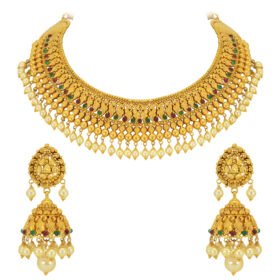 Gold has fascinated humanity for centuries with its stunning beauty and enduring value. However, not all gold is created equal. Understanding the differences between various gold purities, such as 24K, 22K, 18K, 14K, and 10K, is essential when choosing jewelry or making investment decisions. In this blog, we’ll explore the distinctions between these gold types to help you make an informed choice.
Gold has fascinated humanity for centuries with its stunning beauty and enduring value. However, not all gold is created equal. Understanding the differences between various gold purities, such as 24K, 22K, 18K, 14K, and 10K, is essential when choosing jewelry or making investment decisions. In this blog, we’ll explore the distinctions between these gold types to help you make an informed choice.
What is Gold Purity?
Gold purity refers to the amount of pure gold in a given piece of jewelry or gold item, expressed as a percentage. Pure gold, also known as 24K gold, is 100% gold, with no other metals mixed in. Other gold purities, such as 22K, 18K, 14K, and 10K, contain varying proportions of gold and other metals like copper, silver, or zinc.
24K Gold: The Purest Form
24K gold is the purest form of gold you can find. It’s 99.9% pure gold and has a bright, rich yellow color. Due to its purity, 24K gold is relatively soft and malleable, making it unsuitable for most types of jewelry that require durability. However, it’s highly sought after for investment purposes and is used in crafting coins and bars.
22K Gold: A Balance of Purity and Durability
22K gold contains 91.6% pure gold, making it an excellent compromise between purity and durability. It still retains a vivid yellow hue but is more robust than 24K gold due to the alloying with other metals. 22K gold is commonly used for intricate jewelry designs, especially in regions like India.
18K Gold: The Perfect Blend
18K gold consists of 75% pure gold and 25% other metals. This ratio provides durability while maintaining the luxurious appearance of gold. Jewelry crafted from 18K gold is not only durable but also exhibits a beautiful, subtle color that complements various gemstones.
14K Gold: Popular for Its Durability
14K gold contains 58.3% pure gold and is renowned for its strength and resistance to wear and tear. It’s often chosen for engagement rings and wedding bands due to its ability to withstand daily wear and tear while retaining a warm, golden glow.
10K Gold: Durability Above All
10K gold, with only 41.7% pure gold, is the most durable option among jewelry metals. It’s a popular choice for pieces that need to endure heavy use, like men’s rings and bracelets. While its gold content is lower, it still boasts a charming gold appearance.
Factors to Consider When Choosing Gold Purity:
- Budget: Higher gold purity often comes with a higher price tag. Consider your budget when selecting the right gold type for your needs.
- Durability: Think about how often you’ll wear the jewelry and whether it needs to withstand daily use or occasional wear.
- Color Preference: Different gold purities offer varying shades of yellow, so choose one that matches your style and preference.
- Allergies: Some people may be sensitive to metals in alloys, so consider your skin’s reaction when choosing gold purity.
Conclusion:
In the world of gold, purity isn’t the only factor to consider. The choice between 24K, 22K, 18K, 14K, and 10K gold depends on your individual preferences, budget, and intended use. Each has its unique qualities, making them suitable for different purposes. Whether you seek the timeless elegance of 18K gold or the durability of 10K gold, understanding these distinctions empowers you to make an informed decision when investing in or adorning yourself with this precious metal.
